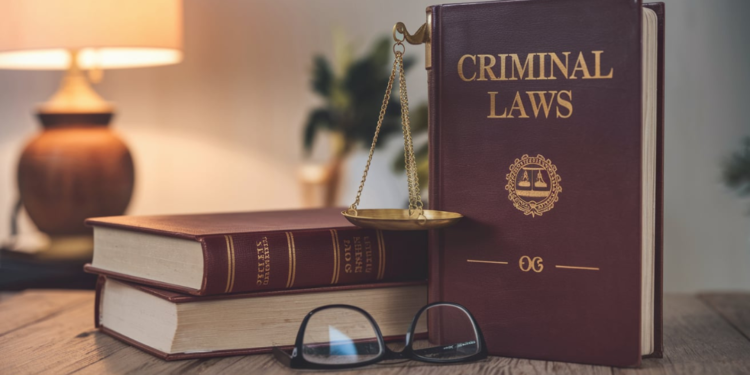Author Gauri Sharma from Guru Gobind Singh Indraprastha University, Delhi
INTRODUCTION
A judgement is the testimony of justice, to be able to end a feud bringing peace to both the parties involved is a very serious and complicated act. To determine what is right and wrong and to be able to give a proper reasonable decision in a case is a very crucial step. Hence, a judgement is the final justice in a case.
Judgement is described in Section 2(9) of the Code of Civil Procedure, 1908. A verdict includes case details, the topics at hand, evidence presented by both sides, decisions on topics (rooted in evidence and reasoning). Each decision must begin with a brief overview of the arguments presented, the issues at hand, the conclusions on each issue, the legal reasoning, and the court’s ruling on the matter. Every day, courts issue countless judgments and resolve a diverse range of cases. Judgments are crucial in the operation of our legal system as they set examples for the many cases expected to arise soon. A judge consistently ensures to provide a clear explanation and justification for their decision in the judgment given.
Alteration of a judgement is a significant matter, and is treated with great caution as it decides the fate of a case, it holds principle of finality and legal certainty that underpin judicial decisions.
LEGAL FRAMEWORK
The term pronouncement refers to issuing an official public statement. A judgement is pronounced after the completion of the hearing, with the Judges announcing it in open Court, either immediately or on a later date after giving notice to the parties or their lawyers.
If the judgment is not given right away, it must be given within 30 days after the hearing concludes. Nevertheless, occasionally, delays may occur for special reasons such as a bank holiday, strike, or other circumstances, resulting in a possible delivery within 60 days after the hearing ends. The judge doesn’t have to read the entire judgment, only announcing the final order would suffice. The judge must include both the date of when the decision was made and his signature. According to Rule 2, Order XX, of the Code of Civil Procedure, 1908, a judge can give a judgment that has been written but not read by the previous judge.
Since the Amendment Act of 1976, a specific timeframe has been established between the presentation of arguments and the delivering of the judgment. Before this amendment, there was no specific time limit in place. The time restriction was put in place due to the ongoing and indefinite pressure coming from various regions in India.
Once a court pronounces a judgement it is final and binding on all, and it is expected by the parties to honour the judgement. Even if the parties are not satisfied with the outcome they can appeal in the higher court, but the judgement in the lower court is not changed. However, nothing is absolute in nature, therefore a judgement can also be altered in some given circumstances. The legal system understands that special or extraordinary circumstances may exist wherein insisting rigidly on the finality of a judgment would lead to unjust or unfair results. For this purpose, certain provisions are incorporated that allow an avenue whereby the judgment may be modified or varied as necessary under appropriate circumstances.
GROUNDS FOR ALTERATION OF JUDGEMENT
- Clerical error: A frequent and easily accepted reason for changing or modifying a judgment is the presence of clerical mistakes. These are small and inconsequential errors that could be present in the court documents related to the verdict. Mistakes in this course may be typographical, such as simple typing errors, calculation errors where numbers may have been incorrectly added or calculated, or other accidental mistakes that happen unintentionally. Even more significant: these errors do not have a substantial impact on the parties’ legal rights in the case. The courts have the authority to correct errors in legal documents through necessary amendments, using their inherent powers or statutory jurisdiction, at any point in the process to make the documents more precise.
The authority is often utilized through a process called “nunc pro tunc,” allowing corrective actions to be applied retroactively, treating the situation as if it had not occurred before.
- New Evidence: Finding new evidence that was previously unknown or unavailable during the trial can be a compelling argument for a court to change its decision. Before deciding if a judgment can be altered for this reason, the court must first determine if the newly presented evidence is considered relevant.
The evidence needs to be strong enough to potentially alter the result and the decision in the ongoing case. The party seeking a judgment review must typically demonstrate that the evidence they are relying on could not have been found before or during the trial, even with diligent effort. A change in course trajectory is often prompted by submitting a motion for a new trial or requesting to reopen a previously closed case for further examination and deliberation.
- Fraud, misrepresentation, wrongdoing: A court may decide to reconsider a judgment if it is clear that it was obtained through fraud, misrepresentation, or other unethical actions by one of the parties. Therefore, the court has the authority to use its judgment to overturn the decision made in the case, whether it be in part or entirely. Committing fraud in court is a serious breach of the law and is therefore taken very seriously due to the negative impact it has on the trust needed for the judicial process. Courts are usually ready to step in and correct the injustice in such situations. Yet, the standard is demanding, necessitating a clear and convincing demonstration of the deceitful behaviour.
- Mistake or involuntary omission: A court ruling can be rectified or rescinded if it was made due to an error, made by either the court or one of the parties involved in the lawsuit. This can include different types of errors, such as factual errors – beliefs about a subject that are later discovered to be incorrect – and legal errors, where the court has misunderstood or not applied the correct legal principles. In certain states, a party involved in a legal case may seek correction of a judgment due to a specific error. Yet, the relief is limited by the time restrictions or other procedural requirements.
- Through Appeal: The ability to appeal is a popular and significant method for changing or adjusting a judgment. The option allows a party who believes they have been wronged by a decision that was made incorrectly or based on wrong information to seek justice in a superior court. An appeals court has the power to thoroughly review decisions made by a trial court and can overturn a judgment if legal mistakes that affected the outcome are found.
It is crucial to mention that, in most cases, an appeal must be filed within a designated timeframe starting from the date of judgment being entered in the official records. Additionally, the appellate court’s ability to review is usually constrained to issues raised and addressed at the trial court.
- Transformation in legal structure: After the judgment is issued, there could arise instances where a change in law necessitates amending or revising the judgment.
This is especially crucial when the change in the law is retroactive, as it could affect all cases decided prior to the date of the law’s alteration. Overall, courts are often hesitant to intervene and review cases that have been definitively settled due to legal changes that could result in ongoing legal battles and conflicts. Yet, when it comes to significant alterations in the law leading to a fresh legal system, it has frequently been noted that the courts approved revisions to the ruling.
- The reason for this is that courts of equity, while originating alongside courts of law, have greater authority to modify judgments based on principles of fairness and justice. In certain places, equitable relief can be requested and approved to change or revise a judgment only when strictly applying the rules would clearly create an unfair outcome for a party in a specific case before the right court. One example within the scope of various situations is when a party is unfairly denied the chance to present evidence and have a fair hearing due to unforeseen and uncontrollable circumstances. They also cover situations where it would be clearly unjust and morally wrong to continue with enforcing the decision, thus necessitating proactive intervention.
PROCEDURE OF ALTERATION
The methods used to change a judgment vary greatly among different legal systems and depend on the specific arguments presented in a case. Nonetheless, there are a number of typical processes that can be recognized, including:
- In numerous locations, a party feeling discontent is allowed to submit a motion for reconsideration or alteration of the judgment after it is issued; however, these motions must generally be filed within a set timeframe following the judgment. Additionally, these movements are usually restricted to allegations of legal mistakes or omissions or evaluations of the circumstances that existed during the initial decision.
- In many jurisdictions, civil procedure laws allow for a process where individuals or parties can request clarification, amendment, or cancellation of a judgment or decree from a court of law based on specific reasons like errors, new evidence, or fraud. Nevertheless, in both of these areas, albeit with differences in criteria and procedures, there is a shared requirement that the individual seeking relief must convincingly prove that during the trial, there was no feasible way for them to prevent or resolve the issue in question.
- Appeal as mentioned earlier, the appeals process is a fundamental and crucial mechanism for altering previous judgments. The procedural rules governing appeals are typically strict and inflexible, requiring appellants to submit their appeals promptly and within a specific, often limited timeframe. Additionally, appellants must adhere to detailed requirements when addressing issues during the appeal process. The outcomes of a ruling by an appeals court can vary, the original judgment may be upheld, altered to some extent, or completely overturned.
- Evaluation and Assessment of Upper-Level Courts When faced with similar situations, many legal systems around the world, especially those with a complex court system consisting of various levels of trial and appellate courts, provide individuals with more avenues to appeal to the highest judicial bodies like a supreme court, constitutional court, or similar establishments. It is important to highlight that courts have the authority to adjust decisions based on broader factors such as constitutional provisions or public policy considerations.
IMPACT OF ALTERATION
Modification of a judgment is indeed a rare instance in the judiciary and one that may have sweeping effects for different aspects of the law and the parties concerned. These effects can be judged against the potential impact on parties in the case at hand, the judiciary as a whole, and the precedent value of the judgment.
Impact on the Judicial System
- Judicial Integrity and Confidence: This power of variation simply reinforces the fact that the judiciary is committed to matters of fairness and accuracy. People begin to have confidence in the system whenever a system corrects an injustice or error. The public regains faith that the system instituted has been put in place to correct its own mistakes so as to uphold the rule of law and ensure that justice has been served.
- Workload and Efficiency: The process to change judgments can also burden the courts. Courts have enough heavy caseloads; the cases that would be reopened to change the judgment would further add to the workload. The requirement of thorough reviews and the likelihood of prolonged litigation can result in a slowdown in the pace of the judicial system as a whole, at times even delaying justice in other cases.
- Precedent and Legal Certainty: Such altering of a judgment may further affect legal certainty as another cornerstone of the rule of law. As judgments are changed too frequently, it gives a sense of unpredictability to the law. In such a case, it could be very difficult for lawyers and litigants to rely upon judicial decisions if they are subject to change at any time. It complicates legal planning and strategy.
CONCLUSION
Now, while a judgment may be altered under certain and unusual circumstances, such judgments can only be within the strict bounds of legal standards and within an existing framework of procedural safeguards. Such procedural safeguards uphold the finality and integrity of judgments while allowing simultaneously necessary steps to correct the very same judgment when it results in a miscarriage of justice. Conserving a balance between these competing interests is thus very crucial and demands a delicate approach, meaning careful sifting of the facts and circumstances of each peculiar case displaying its own peculiar conditions, calling for variations in judgment. The filing of motions for reconsideration, appeals, or any other legal remedies available highlights one of the central ways in which the law evolves to maintain justice and assure fairness to all concerned.
REFERENCE
Verma, A. (2020, February 27). Judgement and Decree under Code of Civil Procedure, 1908 – iPleaders. IPleaders. https://blog.ipleaders.in/judgement-and-decree-under-cpc/#What_is_Judgement_and_Decree



